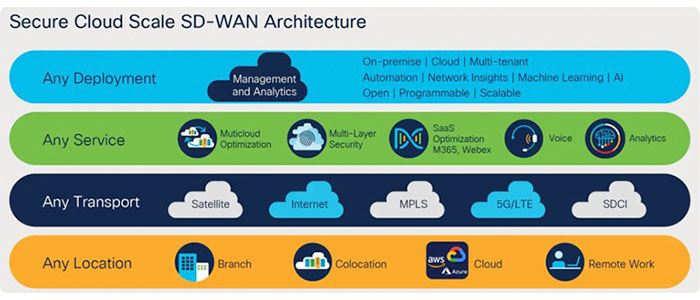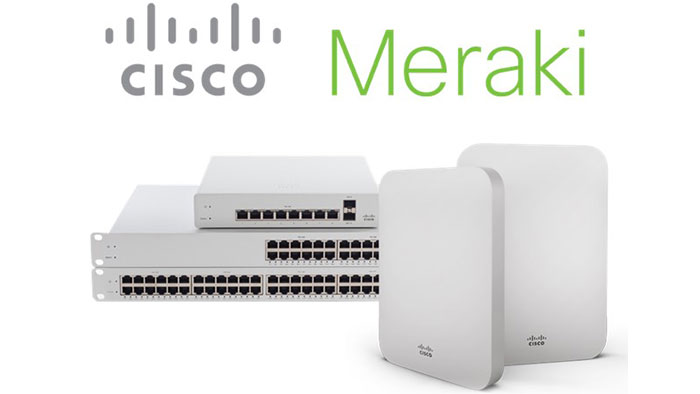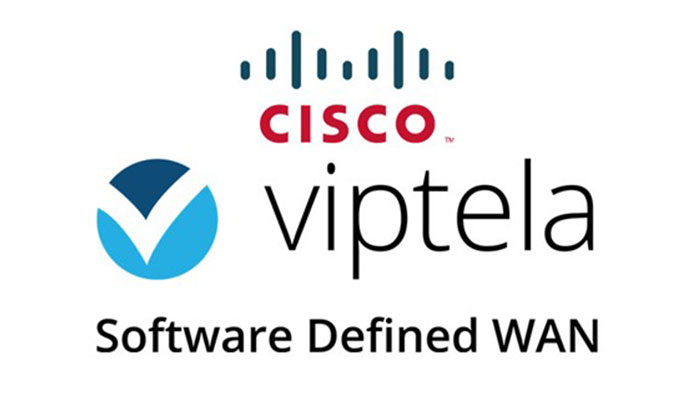
As digital businesses are moving their applications to the cloud, organizations’ IT departments are facing a new challenge: how to find an easy way to connect users and network equipment to cloud applications. Cisco SD-WAN can connect applications, software and computer programs to users and equipment through different cloud spaces. This is done without jeopardizing their safety and performance.
The increasing demand and use of today’s networks has forced organizations and IT departments to migrate from traditional wide WAN networks with complex and insecure operations to new generations of agile and ultra-secure wide networks. This new generation:
With SD-WAN, you can design a wide network that always maintains the highest level of service SLA and performance. Even if there is a problem with the network.
DIA enables staff and guest users to connect to the Internet. Increased security and improved performance in Internet access, enabling traffic offloading over a wide WAN network. The result is efficient and cost-effective access to the Internet directly accessible through offices and different locations of the organization at any point.
With SD-WAN, you can connect users to cloud applications. Also, centrally view and manage an integrated infrastructure.

Meraki and Viptela are among the best software in this field, and we will review these two software together.
Gartner predicts that by 2023, 90% of all edge WAN infrastructure modernization initiatives will be based on virtualized or SD-WAN technologies. In an era where everything is defined by software, manufacturers and service providers are working hard to establish themselves as the leading SD-WAN providers. By integrating SD-WAN with its existing Meraki and ISR product lines, Cisco continues to strengthen its industry leadership position.
Since acquiring Cisco in 2012, Meraki has become one of Cisco’s top-performing networks. Meraki has evolved into a full-service solution with a range of cloud-centric product lines from traditional network and mobile device management (MDM) to security cameras. Due to Meraki’s success and extensive customer base, adding SD-WAN software to the platform was easy.
In 2017, Cisco acquired Viptela, one of the first pure SD-WAN companies. There is much speculation as to why Cisco chose Viptela. But maybe Cisco bought Viptela for the same reason they bought Meraki 5 years ago. Following the acquisition, Cisco expanded its solution by rapidly integrating Viptela SD-WAN software with its extensive ISR and ASR product lines.
Meraki and Cisco Viptela are both excellent SD-WAN solutions, but many customers ask the same question: “Which solution is right for us?” While this post is not an exhaustive list of things to consider when making a decision, I have found two recurring conversations that tend to captivate many customers: segmentation and ease of use.
Segmentation is one of the fundamental principles of network security. The term refers to everything from physical isolation with individual network devices, to virtual isolation such as VLAN tagging and MPLS, to micro-segmentation per virtual machine in the data center. This may seem simple, but it is one of the key differences between the Meraki SASE and Viptela SASE platforms.
Meraki’s current feature set does not allow for any type of end-to-end segmentation in SD-WAN clouds. You can create a local segment on any site (such as a DMZ or guest network). But they are only local. There is no easy way to comply with cross-site targeting.
Instead, Viptela’s SD-WAN architecture was built from the ground up to enable powerful segmentation. One of the basics is segmentation using various VPNs (like VRF as used in Cisco jargon). It can even be granular enough to have different WAN topologies on each segment, not to mention different security/routing policies.

Both solutions completely eliminate CLI management with single-pane, cloud-first GUI management.
Meraki has built a reputation for end-to-end solutions that can be managed by a small IT staff. The Meraki dashboard allows you to access any device on your network, view detailed client and health reports, and make the necessary changes using the GUI. Nothing has changed with Meraki’s SD-WAN solution. With a few clicks, users can turn their existing Meraki MX security appliance into a dynamic SD-WAN solution. For existing Meraki customers, especially those using Meraki MX appliances, the Meraki SD-WAN solution is a great fit.
We’ve listed two key considerations that will affect your business in some way, but it’s important to remember that each platform has its own unique set of capabilities that influence your decision-making. An example of this is the company’s carrier diversity strategy. Another example is public cloud and software as a service (SaaS) strategies. Because each platform can incorporate each aspect and handle it differently.